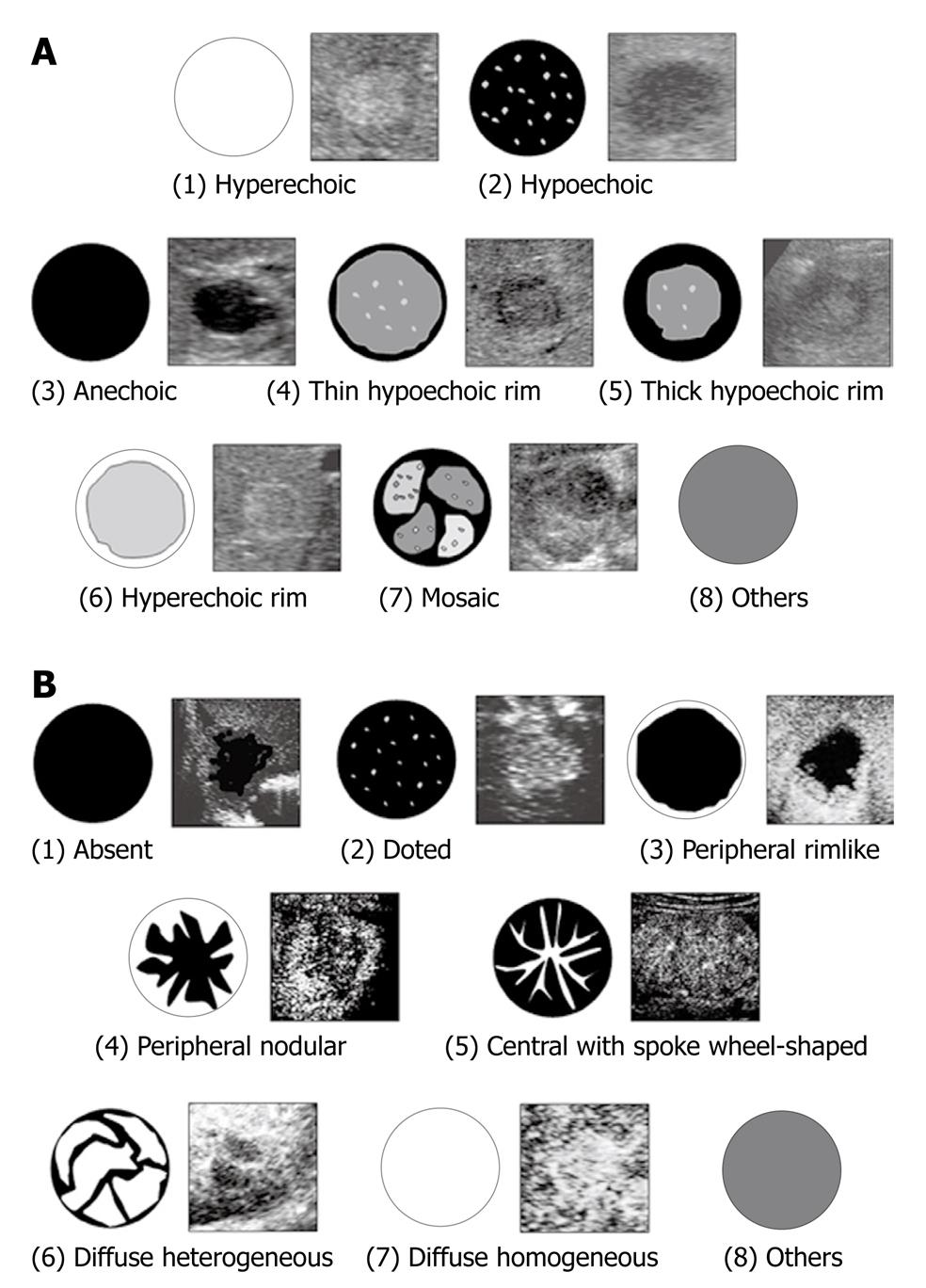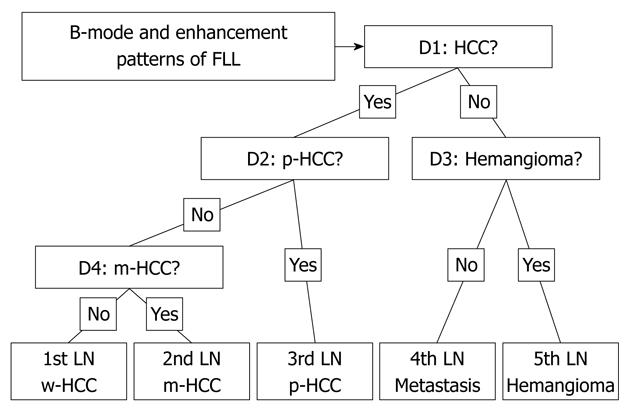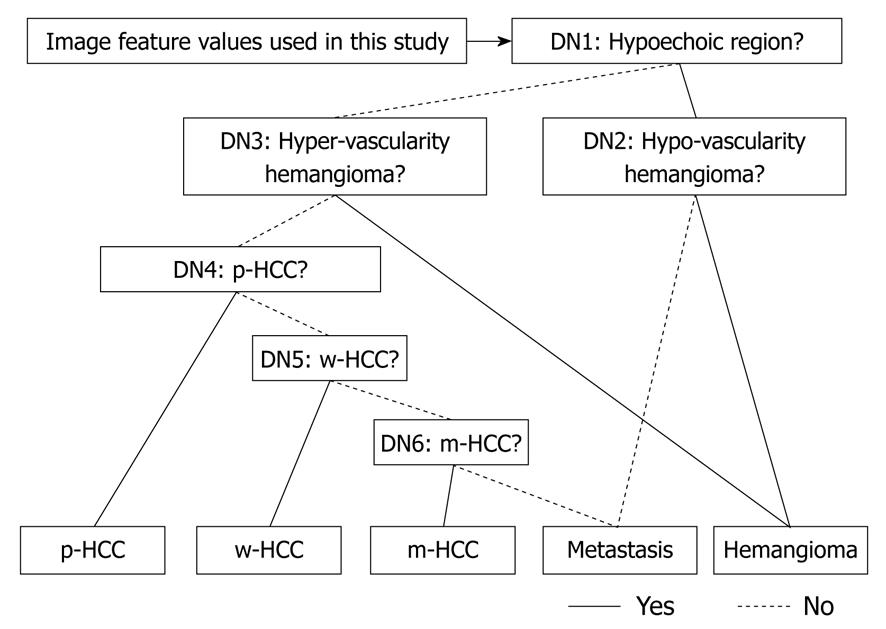Copyright
©2010 Baishideng Publishing Group Co.
World J Radiol. Jun 28, 2010; 2(6): 215-223
Published online Jun 28, 2010. doi: 10.4329/wjr.v2.i6.215
Published online Jun 28, 2010. doi: 10.4329/wjr.v2.i6.215
Figure 1 Hepatic tumors.
A: Illustration of morphologic patterns of hepatic tumors in the B-mode ultrasonography; B: Illustration of enhancement patterns of hepatic tumors in the arterial phase.
Figure 2 Illustration of the decision tree model used in this study.
Four decision nodes in which alternative choice was determined by all five FLLs, leading to a final diagnostic decision for five liver lesions. D: Decision node; FLL: Focal liver lesion; HCC: Hepatocellular carcinoma; LN: Leaf node; m-HCC: Moderately differentiated HCC; p-HCC: Poorly differentiated HCC; w-HCC: Well-differentiated HCC.
Figure 3 Extraction of morphologic and gray-level image features.
A: Original MFI image at the early phase including one FLL (shown as the contour) and a portal vein; B: Vessel-like pattern enhanced image; C: Segmented adjacent liver parenchyma regions obtained from the original MFI image; D: Skeleton of vessel-like pattern enhanced image for estimating the average size of vessel-like patterns on the MFI image; Example of original MFI image at the delayed phase (E) and its segmented images for hyperechoic regions at the early (G) and delayed phase (H). The difference in the regions between two images at two phases was defined as delayed-enhancement region (F). Please note that we defined an “early phase” and a “delayed phase” in the MFI as a replenishment time for reaching 50% and 98% of the maximum average pixel value within a FLL, respectively. MFI: Micro-flow imaging. Reproduced, with modification, from Shiraishi et al[32], Med Phys 2008; 35: 1734-1746.
Figure 4 Illustration of the cascade of six artificial neural networks used in this.
Six decisions in which alternative choices for specific groups of FLLs were determined by single ANN, leading a final diagnostic decision for five liver diseases.
- Citation: Sugimoto K, Shiraishi J, Moriyasu F, Doi K. Computer-aided diagnosis for contrast-enhanced ultrasound in the liver. World J Radiol 2010; 2(6): 215-223
- URL: https://www.wjgnet.com/1949-8470/full/v2/i6/215.htm
- DOI: https://dx.doi.org/10.4329/wjr.v2.i6.215












